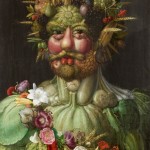In “The Lost Symbol”, Dan Brown takes his “symbologist” non-hero Robert Langdon on a high-speed twelve-hour tour around Washington. Broadly speaking, it’s like riding pillion on a jetbike driven by a demented architectural historian screaming conspiratorial travelogue descriptions into your ears via a radio-mike. But you probably guessed that already. 🙂
In fact, because you all thought your other questions exactly at the same time (which allegedly multiplies their power exponentially, asserts the book), here are the answers to them:-
- Yes, it’s formulaic as hell (and po-faced throughout)
- Yes, it’s a swift read (and for that I truly am grateful)
- Yes, Dan Brown does flag his ‘big’ plot twist 300 pages too early
- No, there are no sex scenes (which is probably just as well)
- No, Robert Langdon is exactly as undeveloped as he was in the Da Vinci Code
- Yes, the “Noetic Science” angle is just nonsense (and unlike most reviewers, I’ve read Lynne McTaggart’s “The Field”, which is what Dan Brown claimed as his inspiration)
The big reversal of expectations here is that, for a change, the Masons are not “The Conspiracy Behind All The Bad Stuff”. Actually, they’re the patsy good-guys, guarding some kind of mysterious symbolic treasure trove they don’t really understand, while All The Bad Stuff spirals out of control around them. In fact, because Dan Brown spends most of the novel stressing how darn nice the Masons are, and how they espouse a kind of universally-benign syncretist meta-religion (like apron-wearing Rastafari, De Trut’ In All Trut’s), his whole project comes over like a colossally misjudged Masonic recruiting handbook. Join us, we’re ancient and have obscure dippy rituals, but we Do Good Works, so that’s OK. Oh, and the Shriners are a joke, got that?
“So what’s your problem with that, Nick?”, I hear you saying. Well… even though Robert Langdon is notionally a “symbologist” (a made-up term that broadly matches iconographer / iconologist, if you don’t examine it too closely), he is still basically an academic historian, right? Hence, what I just don’t get from start to finish is how you can square his being a proper historian with his supposed near-obsessive interest in the kind of hallucinogenic pseudo-history clap-trap that Masonic historians have spent centuries punting out. For every one genuine story in the canon, there are a hundred fake ones: which is a lousy hit rate to be dealing with, even for a symbologist.
It’s true that the inconvenient truth behind the history of History is that it did start out as an exercise in adapting or falsifying marginal evidence to support otherwise untenable ideological claims… apologetics, by any other name. And it is also true that the various Washington monuments are indeed filled with a kind of cheerfully jaunty Man-As-Technological-God secular myth-making – mythopoiesis (if that’s not too scary a word). But as for Langdon buying in to any of it? Doesn’t work for me, sorry.
Actually, I think Langdon’s key attribute (his eidetic memory) is a ‘tell’ for what Brown uses him for – an historical memory machine, a robotic repository able to dredge up every wonky numerological / etymological / mythological fantasy ever devised, while remaining indifferent to all of them. Langdon doesn’t need to feel love, or loyalty, or lust: his mind is a blank canvas, doodled upon by X thousand years of cultural graffiti artists. Even though at one point Brown has a brief chuckle at the Wiki-esque shallow learning of modern students, Langdon himself functions as nothing more complex than a disbelieving walking Wikipedia of the occult and marginal… an erudite ‘conspirapedia’ to help fatten up the page count by a couple of hundred pages or so.
As for what Brown does with all those references… Cipher Mysteries readers should know by now that any time you see (say) John Dee, Francis Bacon, Isaac Newton, Robert Boyle, and (my personal favourite anti-subject) the Rosicrucians come up, you’re normally in the presence of someone fairly credulous – and sadly Brown (who namechecks these and dozens of other similar figures) never gives the impression of being alert enough to stay wise to the historical perils these present. Ghastly.
But what of “The Lost Symbol”‘s cryptography? Well… there’s a little bit of Masonic pigpen (though the fact that simple pigpens can be rotated seems to have been overlooked); the final “substitution” cipher is actually more steganographic than cryptographic; yet there’s some nice stuff on magic squares (no, not magic circles). And that’s about it. All the same, though fairly skimpy, this actually fills me with a deep sense of relief – relief that Brown didn’t try to be too clever-clever with the historical crypto side of things, for which (I’m sorry to say) he clearly doesn’t have much of a feel. Yes, the Dorabella Cipher, the Voynich Manuscript, and even the Kryptos sculpture get flagged: but these are not the main deal.
For me, the worst part of the whole book by a mile is the lack of any functional intimacy or closeness between any of the characters – even though I do appreciate that a lot of technical craft has gone into its plotting and overall construction, 500 pages is a long way to drive without any emotional attachments or transformation to help the reader along. This prolonged drabness caps even The Da Vinci Code’s sustained emotional superficiality: unfortunately… given how bad a film that first book got turned into, I truly shudder at the thought of how bad a film “The Lost Symbol” promises to be. Having done a fair bit of screenwriting myself, I can say that some story problems just can’t be fixed without major, major surgery… and this would seem to have plenty.

